Nikon Nikkor AF-S 85 mm f/1.8G
3. Build quality
The photo below shows the tested lens positioned next to the Canon EF 85 mm f/1.8 USM and the Nikkor AF 50 mm f/1.8D. You can notice the Nikkor 1.8/85G is definitely thicker and a bit higher than the rival Canon.
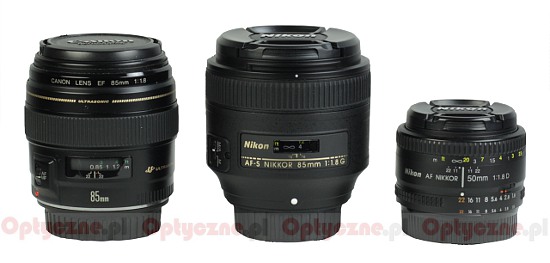 |
Please Support UsIf you enjoy our reviews and articles, and you want us to continue our work please, support our website by donating through PayPal. The funds are going to be used for paying our editorial team, renting servers, and equipping our testing studio; only that way we will be able to continue providing you interesting content for free. |
- - - - - - - - - - - - - - - - - - - - - - - - - - - - - - - - - - - - - - - - - - - - - - - -
Let’s glance at a comparison between the tested lens and other 85 mm devices with the aperture of f/1.4, presented in the next chart. This time the small weight of the Nikkor 1.8/85G is not surprising but it remains interesting that even there the Nikkor sticks out as optically very complex device – only the Nikkor AF-S 85 mm f/1.4G is more complex than the tested lens.
Now it’s time to look more closely at the casing and the build quality of the tested lens. It starts with a metal mount with contacts. The mount surrounds a rear element which is immobile and 31 mm in diameter. The element is positioned almost on the same level as the contact.
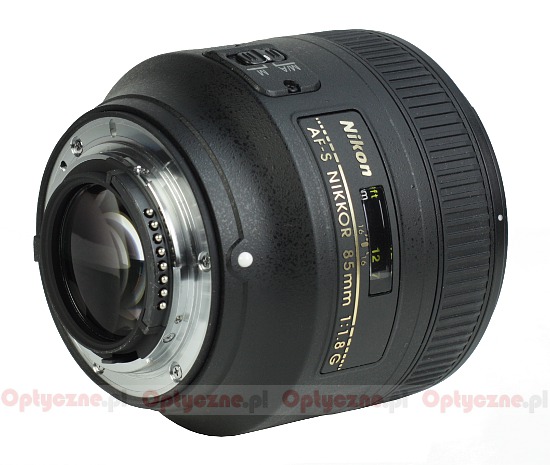 |
The proper casing is covered by black plastics. Right next to the mount you can find a white dot which indicates how to attach the lens to a body. Right after that the diameter of the lens increases sharply. When it reaches its maximum dimensions you can see other parts of it. Straight on there is a plate with the name and parameters of the lens and a distance scale, expressed in meters and feet, behind a window. Below, you can find depth of field markings but only by f/16 so moderately useful. On the left there is a focusing mechanism mode switch (M/A-M) and, on the other side of the scale, a serial number of the lens, information concerning the usage of an SWM motor, the internal focusing (IF) and a filter diameter (67 mm) along with the notice that the lens was produced in China.
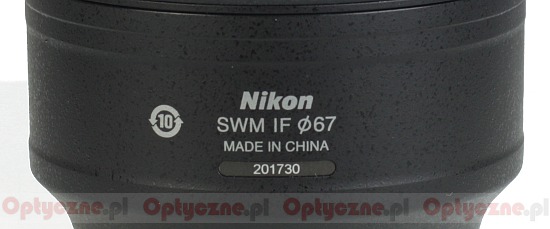 |
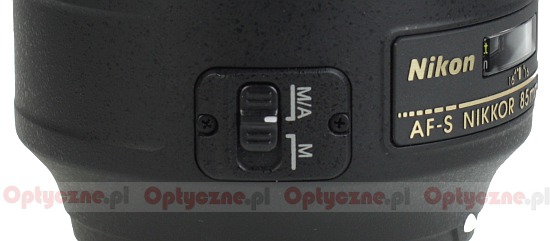 |
The next casing part is a ribbed manual focus ring, 16 mm wide. It works smoothly and is well-damped but it has some slight slack – when you change the direction the first move of the ring doesn’t influence either the position of the elements or a value on the scale. Unfortunately it is an affliction quite often met in cheaper Nikkors. Running through the whole scale takes a turn through 100 degrees. In some situations this value is not enough to guarantee you a necessary manual focusing precision. For example good manual instruments with similar parameters have a manual focus ring working range of over 200 degrees.
At the front of the lens there is a hood mount, a non-rotating filter thread, 67 mm in diameter, and a front element. The front element is immobile, hidden by about 1 cm inside the casing and 4.5 cm in diameter.
When it comes to the inner construction it is quite complex for a 1.8/85 lens - you deal here with 9 elements positioned in 9 groups. Like in the case of the 1.4/85G the producer doesn’t boast of using any special elements. The whole image is complemented by a circular aperture with seven diaphragm blades which can be closed down to f/16. Contrary to a more expensive 1.4/85G model, produced in Japan, the tested lens wasn’t equipped in NanoCoat layers.
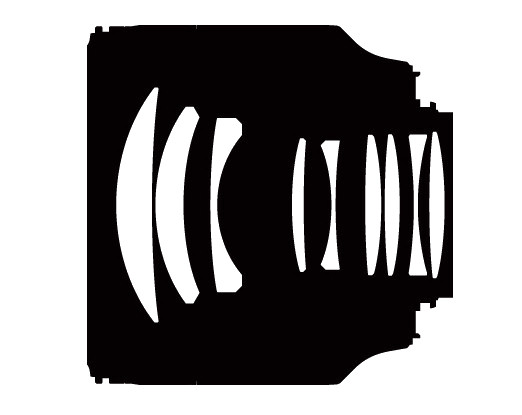
Buyers get both caps, a hood and a soft pouch in the box. This accessory kit is quite rich for an amateur device. Many producers offer you just caps at this price point.
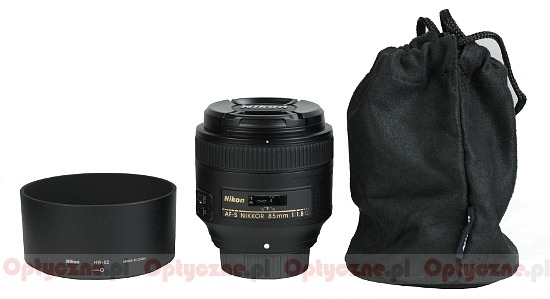 |






